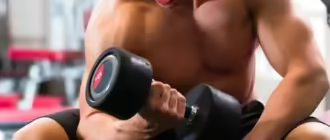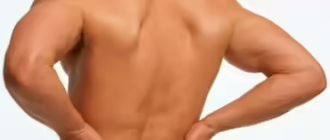If the growth of the leg muscles has stalled, start bombing each of them separately. As soon as the muscles get used to it, their growth immediately stops. And to prevent this, you should constantly change the load parameters: the arsenal of exercises, working weight, number of sets, etc. Moreover, in the case of the leg muscles, these changes should be made much more often than with other muscle groups. Why?
The fact is that your legs only rest when you sit or lie down. The rest of the time they work, and very intensively: the minimum working weight that they always hold is the weight of your torso. As soon as you pick up something, the weight of it is immediately transferred to your feet. Is there any other muscle group that can compare with the legs in terms of the volume of work performed per day? The answer is negative. This is why the leg muscles are the strongest, most resilient and most trained, which means they adapt to changes in load much faster than all other muscles.
We offer a non-standard method that radically changes the load on the legs and dramatically stimulates their growth. Its essence: instead of traditional exercises that involve two legs at once, perform their unilateral version, which irons each leg separately.
“If your quads and hamstrings are showing signs of stunting, switch to unilateral exercises and you’ll be on your way to breaking through the plateau within 4 to 6 weeks,” says Tom Seaborn, popular American trainer and author of the best-selling book Great Glutes and Thighs: A Guide for Dummies. . He goes on to say, “While most leg exercises can easily become unilateral, deadlifts and squats can take a lot of work to get the hang of doing them on one leg. But it’s worth it! When you later return to traditional bipedal exercises, you will be amazed at how much leg strength has increased!” Here are his tips to help you learn how to squat on one leg.
» Practice single-leg squats with light dumbbells or no weight at all. It will be difficult to stand on one leg at first, so hold on to a wall or counter.
» Keep your free leg supported behind you. Lunges and single-leg squats are essentially different exercises. Squats on one leg are much more difficult and powerful! You can also keep your leg suspended while doing Smith machine squats.
» Follow the correct technique: lower yourself into a squat until your thigh is parallel to the floor. Pause, and then tense the muscles of your working leg and rise to the starting position. Don’t round your back or lower your head.
» Perform squats at a slow pace. Squat for a count of “one-two-three”, pause for “one”, rise up again for a count of three.
» Do 10 repetitions on each leg. To start, alternate legs in a set, but over time, complicate the exercise: first work out all the sets for one leg, and then for the other. When you can complete 10 repetitions without compromising your technique, take heavier dumbbells.








